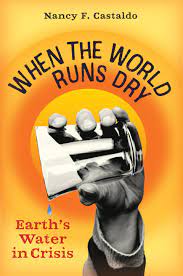by Kelly Crull
Millbrook Press, 2022
Grades 2-6
This unique, environmental picture book features fourteen sculptures created by the non-profit organization, Washed Ashore. Washed Ashore was founded by Angela Haseltine Pozzi in 2010 to educate the public about ocean pollution.
The layout of the book is a strength and will engage young children while teaching them about the harmful effects of plastic trash in the ocean. Each two-page spread includes a colorful, close-up photograph of a sculpture of marine life made from plastic trash. The expository text offers interesting facts about each featured animal and how plastic trash affects the creature and its habitat. Crull's writing is crisp and clear for young readers to comprehend.
On the bottom of each page is a "Can you find..." section. Readers are asked to locate various pieces of plastic trash in the sculpture similar to I Spy books. Sidebars in the upper right corner of the page share tips for reusing, reducing and recycling plastic trash.
There is a plethora of information in the back matter as well. Readers will be inspired to create their own trash sculptures with a step-by-step guide that shows Angela's artistic process. Crull also includes directions for a scavenger hunt game with the goal of cleaning up trash on beaches and in bodies of water. Run out and purchase this creative and interactive book that will inspire the readers of all ages to make a difference in the world. Washed Ashore could be used in public library programs, science classrooms, and it would make an excellent gift book.


















